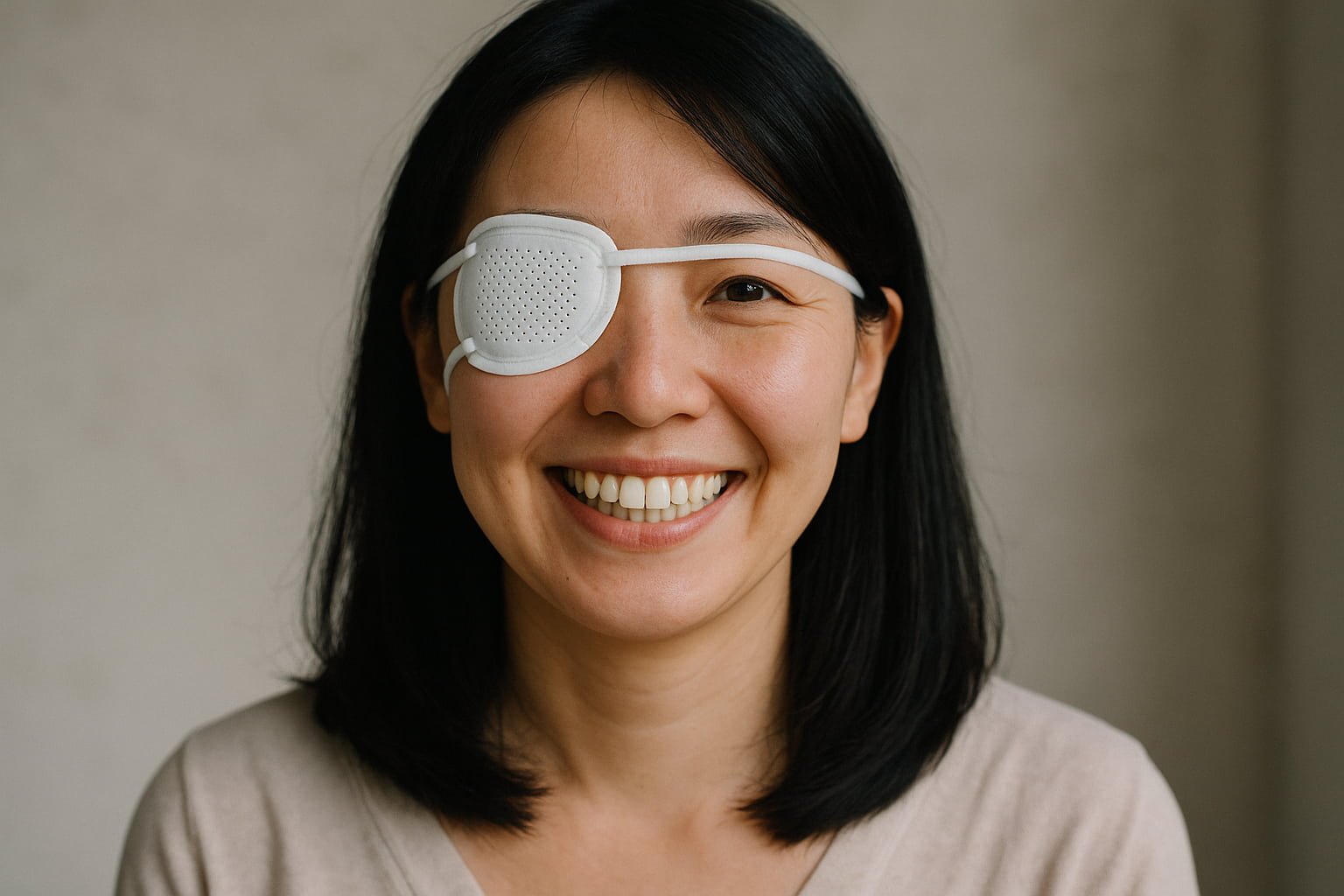Why So Many Eyepatches in Japan?
Eye patches in Japan are a common sight.
So, are you witnessing cosmetic surgery recovery or teenage fashion and anime tropes?
A stray thought you get on trains, in shopping malls, or on the street: Did I miss a pirate convention or what is up with all these eyepatches in Japan?
For clarity, you are likely looking at the crisp white eyepatch and not the pirate kind, but that still leaves the wonder of what is going on around you.
To be clear, this is not the fallout of kendo accidents.
Eyepatches in Japan cover medical situations, but even more so cosmetic surgery – and that is before we get to teenage fashion and anime tropes.
The main reason for eyepatches in Japan
Disposable gauze eyepatches are sold cheaply in Japanese drugstores, and doctors prescribe them for infections, corneal abrasions, or recovery after eye procedures.
Depending on the source, you will find that the main reason for eyepatches in Japan is not medical but cosmetic. Throughout Asia, including in Japan, double eyelid surgery (blepharoplasty) is hugely popular.
The procedure creates a fold in the eyelid, giving a “larger” and more expressive eye shape. The surgery tends to be done one eye at a time, which is most likely why the young woman on the Yamanote Line is wearing an eyepatch – this is partly because the procedure is especially popular among young generations.
A 2023 Asahi Shimbun report noted that many high schoolers and even junior high schoolers are seeking double eyelid procedures, often motivated by Instagram, beauty apps, and the desire to match their “filtered” selves.

Eyepatches as frail fashion
Not every eyepatch in Japan hides stitches or eyedrops. Some are deliberate fashion choices.
Enter menhera (short for mental health-er), a subculture that blends cutesy aesthetics with imagery of illness or fragility.
In a sense, menhera, which emerged in the 2000s, is the “anti-kawaii”: rejecting the over-the-top happy-cuteness by injecting vulnerability and darkness into the look.
For menhara teens, the eyepatch can be a way of saying, “I’m fragile, but also strong enough to show it.”
If this sounds weird, then consider how Western emo culture embraced bandages, scars, and melancholy. Or, if you’re old like me (get off my lawn!), the “touch me I’m sick” culture and aesthetic of grunge.
The influence of anime and manga
Even if you haven’t had real-life eyepatch experiences while visiting Japan, you will have encountered them if you watch anime or read manga. A couple of well-known examples among a million samurai, villains, schoolgirls, and, yes, pirates, for reference:
- Rei Ayanami in Neon Genesis Evangelion cemented the trope of the mysterious, vulnerable, half-broken girl with an eyepatch.
- Rikka Takanashi in Love, Chunibyo & Other Delusions parodied the trope, with a character who wears an eyepatch not for medical reasons but to hide her “sealed powers.”
For artists, the eyepatch is a great way to suggest mystery, trauma, or hidden strength. Both manga and anime are known for their plethora of characters that can easily blur together (case in point) and become confusing for readers. Here, the eyepatch helps easily define characters in a single stroke.
What eyepatches say about Japan
If we put on our “cultural overinterpretation glasses,” the white eyepatch says quite a bit about modern Japanese culture and society. However, living here for 10+ years (I told you I was old…now, what are you still doing on my lawn?!?!), I think the connections and observations below are generally applicable:
Patches mean eye conditions are treated visibly rather than hidden. This is part of a broader trend of Japan slowly becoming more open about addressing and accepting medical conditions and disabilities instead of trying to hide them from sight.
Spend some time in downtown Tokyo, and you will see teens and young adults (predominantly female) with the telltale patches of double eyelid surgery. Not unlike South Korea (but not to the same degree), Japan is a highly conformist culture when it comes to looks and beauty. Double eyelid surgeries are perhaps the best illustration of this.
Menhera aesthetics takes the double eyelid surgery and flips it on its head. In this context, it is partly a push back against mainstream “kawaii” and beauty standards. However, it is also an aesthetic choice in this context, just a different one.
For me, a central part of writing this article is to illustrate that while it is easy to find the eyepatches weird, there is (warning: poor wordplay incoming) more to them than meets the eye.
I struggle with the whole double eyelid surgery thing and beauty standards here. However, I remember that this, as a trend, isn’t that far from the tanning salons (or ice pumpkin spice latte double frappuccino) that I see when going back to where I grew up.
And if you think it is strange that Japanese people seem quite ready to wear the patches out in public, (dons British accent) think about what some people regard as adequate attire to frequent a Walmart, (discards British accent) or a Tesco’s for that matter.
